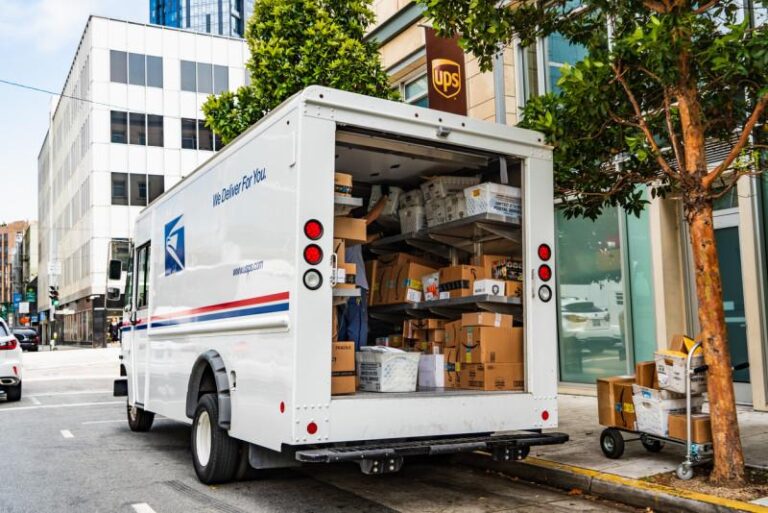Mail and parcel delivery services are set to resume today as postal workers initiate rotating strikes across the country, disrupting regular operations. The postal union began the work action this morning, signaling a renewed phase of labour unrest amid ongoing contract negotiations with Canada Post. The rotating strikes, designed to apply pressure while maintaining limited service, have prompted adjustments in mail handling and delivery schedules nationwide. This development marks a critical point in the standoff between the union and postal management, with significant implications for businesses and individuals relying on timely mail and parcel delivery.
Mail and Parcel Services Set to Resume Amid Rotating Postal Union Strikes
Following weeks of disruption caused by labor disputes, mail and parcel operations are finally set to recommence today as the postal union initiates a schedule of rotating strikes. This strategic approach aims to maintain pressure on negotiations while allowing intermittent service availability to mitigate widespread delays. Customers can expect phased delivery improvements as Postal Service teams prioritize high-volume routes and essential mail, gradually restoring normal operations over the coming days.
Key highlights of the rotating strike plan:
- Strike action will alternate between regions to minimize nationwide impact.
- Essential mail services, including medical and legal deliveries, will continue uninterrupted.
- Parcel shipments might experience varying delays depending on the strike schedule.
- Negotiations remain ongoing with union representatives aiming to address staffing and safety concerns.
| Region | Strike Days | Service Level |
|---|---|---|
| East Coast | Monday, Thursday | Partial Delivery |
| Central Region | Tuesday, Friday | Limited Service |
| West Coast | Wednesday, Saturday | Operational with Delays |
Impact of Postal Disruptions on Businesses and Consumers Explored
Businesses across multiple sectors have felt the immediate pinch of postal disruptions, with delays in receiving crucial documents, inventory shipments, and customer orders. Retailers reliant on timely deliveries witnessed inventory shortages, ultimately leading to lost sales and dissatisfied customers. Furthermore, small enterprises and e-commerce platforms faced mounting pressure to communicate delays while scrambling for alternative courier services, often at higher costs. The ripple effect has challenged supply chain reliability and altered consumer expectations around delivery timelines.
Consumers, meanwhile, experienced inconvenience not only in receiving parcels but also in sending essential mail, such as bills, legal documents, and personal correspondence. The uncertainty introduced by rotating strikes compounded frustrations, with some opting for digital alternatives where available, while others confronted the limitations of such options-especially in rural or under-connected areas. Below is a snapshot of average delay impacts compared to normal service levels:
| Service Type | Average Delay (Days) | Impact on Users |
|---|---|---|
| Standard Mail | 3-5 | Missed payment deadlines, legal risks |
| Parcel Delivery | 5-7 | Order cancellations, customer dissatisfaction |
| Express Services | 1-2 | Minimal, but fluctuating punctuality |
- Rural and remote areas have suffered disproportionately due to limited delivery alternatives.
- Financial sectors noted risks associated with delayed documentation affecting transactions.
- Consumers increasingly seek digital substitutes, yet gaps remain, especially for official or physical mail requirements.
Strategies for Minimizing Delays During Ongoing Labour Action
To mitigate service disruptions amid the postal union’s rotating strikes, postal management is implementing a multi-faceted approach designed to streamline operations while supporting affected workers. Key strategies include reallocating available staff to high-demand routes, enhancing automation in sorting facilities, and extending delivery hours to maintain consistent parcel flow. Offices are also prioritizing critical shipments, such as medical supplies and time-sensitive documents, ensuring these reach recipients without undue delay.
Customers are encouraged to adopt several proactive measures to reduce potential hold-ups during this period:
- Plan shipments well in advance to avoid peak strike days.
- Utilize digital tracking tools for real-time updates on parcel status.
- Explore alternative delivery options, such as local courier services or parcel lockers.
| Strategy | Objective | Expected Outcome |
|---|---|---|
| Staff Reallocation | Redirect workforce to critical routes | Maintain delivery frequency |
| Extended Hours | Increase sorting and dispatch capacity | Reduce backlog build-up |
| Priority Handling | Focus on urgent shipments | Enhance customer satisfaction for essential deliveries |
In Retrospect
As rotating strikes by postal workers begin this morning, disruptions to mail and parcel delivery are expected to continue in the coming days. Both the postal union and management have emphasized the importance of ongoing negotiations to resolve the dispute and restore full service. Customers are advised to stay informed on developments and anticipate potential delays as the situation evolves. CTV News will continue to monitor the story and provide updates as they become available.




